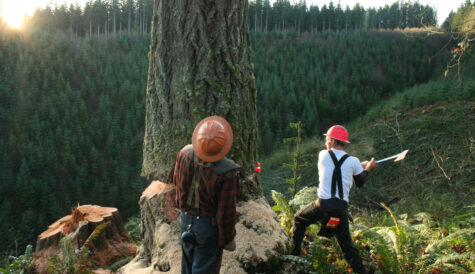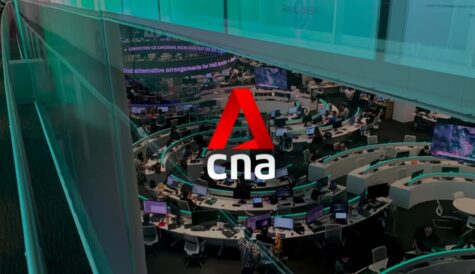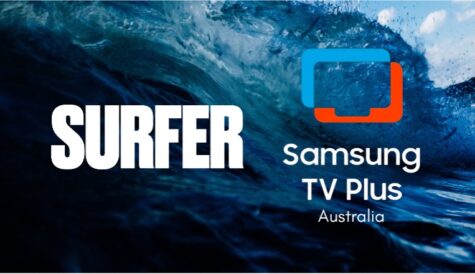
After more than 40 years of operation, DTVE is closing its doors and our website will no longer be updated daily. Thank you for all of your support.
High and wide
Building a portfolio of channels is seen as a natural expansion for international providers, while HD variants are increasingly a must-have.
Building a portfolio of channels to capture digital “real-estate” has long been a preoccupation of many international channel providers. More recently, the launch of HD channels has become a sine qua non for many international channel providers.
 Expansion of the portfolio is a natural extension for the majority of channel providers. Earlier this year, kids broadcaster KidsCo launched its second channel, BigTV, just three years after debuting its main channel. Targeting kids aged 8-14 years, Big TV launched on Nigeria’s MyTV platform in August with a programming line-up that includes My Parents are Aliens, Even Stevens ands 100 deeds for Eddie McDowd. The channel is aimed at an older demo than KidsCo and only carries live-action programming, unlike KidsCo. “We are absolutely looking to see whether BigTV can go into other markets. One of the things I’ll be doing at MIPCOM is seeing what the appetite might be for BigTV in other markets,” says KidsCo managing director Paul Robinson. KidsCo’s move towards live-action is perhaps unsurprising. Disney has seen huge success with live action shows such as Hannah Montana, Camp Rock and The Suite Life series. Nickelodeon also has a healthy slate of live shows. “We are aware that those channels are doing a good job but we’ve taken comedies that aren’t available on them and assembled an alternative,” says Robinson. “Clearly we’re not attempting to compete head to head, we’re offering a very different price point. It might not have the volume of original production as Nick and Disney but in terms of value for money we think that Big TV is a really good channel.”
Expansion of the portfolio is a natural extension for the majority of channel providers. Earlier this year, kids broadcaster KidsCo launched its second channel, BigTV, just three years after debuting its main channel. Targeting kids aged 8-14 years, Big TV launched on Nigeria’s MyTV platform in August with a programming line-up that includes My Parents are Aliens, Even Stevens ands 100 deeds for Eddie McDowd. The channel is aimed at an older demo than KidsCo and only carries live-action programming, unlike KidsCo. “We are absolutely looking to see whether BigTV can go into other markets. One of the things I’ll be doing at MIPCOM is seeing what the appetite might be for BigTV in other markets,” says KidsCo managing director Paul Robinson. KidsCo’s move towards live-action is perhaps unsurprising. Disney has seen huge success with live action shows such as Hannah Montana, Camp Rock and The Suite Life series. Nickelodeon also has a healthy slate of live shows. “We are aware that those channels are doing a good job but we’ve taken comedies that aren’t available on them and assembled an alternative,” says Robinson. “Clearly we’re not attempting to compete head to head, we’re offering a very different price point. It might not have the volume of original production as Nick and Disney but in terms of value for money we think that Big TV is a really good channel.”
One of MTVNI’s strategies has also been a move into targeting an older demographic. In the UK it rebranded the TMF music channel to Viva, added some signature acquisitions, including Two and a Half Men along with some local commissions and its own content along with music, and created a Freeview service that appeals to an older age group. The UK is also home to Comedy Central. “We saw an incremental opportunity in the adult market, where we had a negligible share of the audience yet we have capabilities, assets and expertise that allows us to pursue them,”says MTVNI’s president Bob Bakish. “In the UK it’s a multi-prong attack towards that demographic. People talk about international strategy and we do have one but it also comes down to market level. As we look at the world, there are specific opportunities. Whether that means we stay only in kids and music in a market, only time will tell, but there are clearly some opportunities that are more compelling.”
The original driver for Turner was news channel CNN, which is why that channel is so widely distributed now. On the back of the infrastructure and relationships it forged from distributing CNN came a very successful kids business, starting with Cartoon Network followed by spin-offs including Boomerang and, most recently, Cartoonito. “It’s not so much about entering new countries,” says Peter Flamman, senior vice-president, entertainment, northern Europe and the UK at Turner. “We’ve established a presence in most markets and are highly localised in many of them.” Turner has been recently focusing on developing its entertainment portfolio, including TNT and TCM. “Entertainment is a very big part of our mix in the US and Latin America,” says Flamman. “Whilst we’ve had a presence in Europe for a long time, for example with TCM, it’s not the same proportional size of our activities [there]. We’ve got a lot of assets and our focus is on building a much stronger position in the entertainment genre.” The recent acquisition of Scandinavian channel operator Millennium Group, which owns entertainment brands, is part of that strategy. Entertainment is a competitive genre and Tuner is pitching itself as a “specialist, niche player” according to Flamman. “We’re slightly more niche than the incumbents. While we’ll try and launch as widely as possible, we need to understand the market dynamics and decide the best route in.” He says it has launched its entertainment channels organically in selected markets, including Germany, where it saw growth in the pay-TV business and a gap in the market for a niche entertainment offering. In Turkey it struck a partnership with local operator Dogan Media Group which provides local market knowledge including ad sale and access to content.
“We’ve got a lot of assets and our focus is on building a much stronger position in the entertainment genre.”
Peter Flamman, Turner
Sean Cohan, senior vice-president of AETN International believes that a varied portfolio of channels serving different interest groups is more attractive to service providers and beneficial to channel providers, helping them to build a broader audience base. AETN also owns the female-skewed Lifetime channel in the US. Cohan will not be drawn on the question of how and when Lifetime could launch internationally, but says the company is “looking forward to bringing Lifetime content and brands and services [to the international market] in the near future”, beginning with selling programming in the international market. “As for when we see that first channel, we would look to get Lifetime out there and we think it’s the leading channel in the genre in the US,” he says. “I think there is an appetite out there – there are a fair number of competitors.”
AETN also distributes the male-skewing Military History Channel in the UK, but has no immediate plans to target other international markets for it, in part in order to avoid cannibalising the audience for History, a line of thinking that fits in well with Cohan’s view that channel portfolios should cater to a diversified audience. “We generally like to see History get its feet [into new markets] and really drive viewership,” says Cohan. “We would wait until History is mature and then add in Military History to broaden the portfolio without having a negative impact on the core History channel. There has been a lot of demand [for Military History] but tactically it’s smarter for us to be thoughtful about adding content for the military history enthusiasts.”
HD channels
If expansion of a portfolio by way of spin-off channels is a possible route to expansion of a channel provider’s presence in the market, launching one or more HD channels is increasingly a must-do for all. BBC Worldwide has launched the BBC HD channel in Poland on the Cyfra Plus and TVN-backed ‘n’ DTH platforms as well as on the UPC platform. The channel is also available in Turkey via the Turksat platform. “It looks like a promising market,” says Ian McDonough, BBC Worldwide’s senior vice-president, EMEA. “In western Europe HD is certainly what people want to talk about. With our high-quality HD content and the ability to distribute it cost-efficiently I think we can break through more with HD than SD.” McDonough says he is hopeful that more announcements will be in the pipeline shortly. “We would see HD as the future,” he says. “As BBC content is going to be 100% produced in HD, there is the possibility to [expand] if we have the capacity to do that.”
KidsCo is also planning to launch an HD channel. “Someone has to want the channel and it’s got to be commercially viable. There are clearly costs involved in launching HD but it could give us access to a platform that we wouldn’t otherwise be able to launch on,” says Robinson. “We broadcast a lot of HD content already but in SD. Switching to HD wouldn’t be a huge challenge and as we acquire more HD content it becomes even easier.”
MTVNI has already launched an HD feed, MTVNHD, that is now pretty widely distributed. The channel provider is now considering more localised services, whether localised insertion into a main feed or a 24-hour local feed. So far, it has launched a HD version of the Comedy Channel in the UK. “It took a while to get going but we’ve started some HD services that have proved successful,” says Bakish. “We recently launched Comedy Central HD in the UK and you’ll see us do more in that area. I believe we’ll see more localised HD TV channels over time. You’ll see us go from a single feed to regional insertion and ultimately we’ll have a 24 hour local HD feed – it might take a while till you get there but there’s clearly a progression.”
Also currently looking to launch an HD channel in Europe is Comcast International Media Group (CIMG), which already delivers its flagship E! Entertainment channel in HD in the US. “We are building business plans to identify an HD rollout,” says CIMG EMEA managing director Brad Wald. “I think 2011 will be the year. There is demand coming from various regions and affiliates.”
Sports channel Eurosport has been successful with HD, following up the launch of Eurosport HD, which currently broadcasts about 40% of its content in full HD, with Eurosport 2 HD. The former now reaches over 10 million homes in Europe. “HD is still expensive but is now a mature technology, so naturally some costs are dropping for broadcasters and consumers alike. However, at Eurosport, we are increasing our commitment to HD programming which means that costs are still high,” says Jean-Thierry Augustin, managing director, distribution, rights acquisition and development. “This year, we will invest in the HD production of a wider variety of sports. We are not content to only broadcast the big events in HD; we want to reach out to a bigger range of sports. This means an extra level of investment on our part, but we are committed to this.” Eurosport has also test 3D technology, broadcasting the Roland Garros French Open in 3D with Panasonic and Eutelsat. Augustin believes 3D will be important in 2011. “We have demonstrated we are able to produce a quality 3D signal across Europe, and on a multi-day basis. Even though this 3D trial was positive, we still need to see how relevant 3D will be for the viewer,” he says. “3D is changing the way people consume TV. It’s now becoming a kind of ‘viewing by appointment’ whereby people choose an event and make it a special communal occasion. 3D will also invariably change the way broadcaster produce events, and sooner rather than later.”
Default setting
HD is one of AETN’s two main priority areas along with expansion of the distribution of its existing portfolio in markets where it is already present. “We have been beneficiaries of our content factory in the US making HD for the last three years,” says Cohan. He believes that HD will become the default setting for most platform operators in a few years, as it already is to some extent in the US. With the majority of its output already available in HD, and HD versions of its major channels all available, AETN is also tracking the rollout of 3D channels and is “dipping a toe in the water” of 3D production, according to Cohan.
In Spain, Chello Multicanal is building on its recently acquired Teuve portfolio by launching an HD version of the MGM Channel (developed as a partnership with MGM, which populates the channel with content). In general, however, Chello Multicanal’s managing director Eduardo Zulueta believes that HD will continue to have relatively limited take-up in the Iberian market. “It depends on the capability of our client [platforms] to launch HD feeds,” he says. “It’s expensive for them as they need more bandwidth. Certainly, we will be ready when they are, and MGM is a case in point – it’s our first HD launch. There could be others, but the clients need to show an appetite for it.” While satellite platform Digital Plus is leading the way with HD in Spain, Multicanal currently lacks a carriage agreement for MGM. The channel is scheduled to go live at the end of September on the Imagenio platform, which has said it plans to launch its HD service in October. However, of Imagenio’s some 700,000 subscribers, only a small proportion are currently capable of receiving HD.
Zulueta says that Multicanal is also looking to launch an HD feed of its Canal Hollywood movie channel in Portugal, possibly followed by an HD version of the channel for Spain.
Chellomedia sister company Chello Benelux, which unlike Multicanal has focused on premium services, offers one HD version each of its film and sport channels. Managing director Jeroen Bergman says the company is in discussion with service providers with a view to launching an additional HD film and an additional HD sports channel.
For free-to-air channels HD can be seen as a necessary evil, adding to cost without any concomitant increase in revenue. Philippe Rouxel, vice-president of worldwide distribution at news channel France24, does not believe that news channels can ever be fully HD because of the wide variety of video sources they use, but can only move towards the goal of becoming HD channels incrementally. Where possible, material is already filmed in HD, including studio interviews, but the channel’s output will clearly include a large amount of material that is of variable quality. “All the material that comes in to us is clearly not HD and will never be HD because we want to be as reactive as possible [to events],” he says. Nevertheless, in certain markets HD is increasingly a must for any channels seeking to expand their distribution. This is particularly true of North America, but it is also increasingly the case in the Asia Pacific region that new channels find it difficult to gain traction unless they are available in HD. “Today a lot of markets are going to be closed to non-HD-ready channels so we need to be HD,” he says. This could mean a variety of things in practice, including carrying HD feeds of certain programmes as part-time opt-outs from the main channel (which can be a means of conserving bandwidth).
For fellow international news channel Al Jazeera, HD distribution is currently a subject of study. “We are currently looking at our strategy for HD,” says Al Anstey, director of media development at Al Jazeera Network. As with France24, HD is seen as a must-have for distribution in the US and for certain Asian markets. While Al Jazeera English is HD-ready, it has no distribution agreements for an HD version of the channel currently.
More bullish is Discovery, which has been one of the pioneers in driving adoption of HD. Examples of flagship HD programmes including Discovery-BBC co-production Planet Earth have helped drive take-up of services. “Discovery has invested heavily in increasing our HD footprint over the past year. We are now present in over 80 international markets, with our greatest distribution across Europe,” says Mark Hollinger, president of Discovery Networks International. “Growth in HD has been driven by a virtuous circle – as technology improves, more HD content is produced, and so on until ultimately, there is a greater demand for HD content. Europe is in the throws of industry adoption for HD programming, channels and technology.”


